Dark matter
Article curated by Ed Trollope
Dark matter is a proposed solution to a number of unsolved problems in physics. The name dark matter refers to material that does not emit or absorb light (and thus we can't see it and it is "dark" to us), but can affect the universe on large scales because it has mass – and so gravity.

Evidence for dark matter
Dark matter has mass, but is not known to interact electromagnetically, and so can't be detected with telescopes, radio waves or x-rays. The gravitational effect of this mass could be responsible for the higher speeds of stars within galaxies, and of the galaxies within clusters. If this dark matter is indeed unaffected by electromagnetic forces, it may have been able to form structure in the universe before atoms had formed, and explain the variations observed in the cosmic microwave background. Its mass could also explain the observed expansion of the universe and the observed relative abundance of elements created in the period shortly after the Big Bang. Perhaps the most compelling evidence for the existence of dark matter however, is the gravitational lensing observed in the Bullet Cluster: this seems to show directly that mass is concentrated in an area other than ordinary matter, and can't easily be explained in any other way (such as modifications to our understanding of the way gravity works).
Learn more about Evidence for dark matter.

 3
3Spinning galaxies
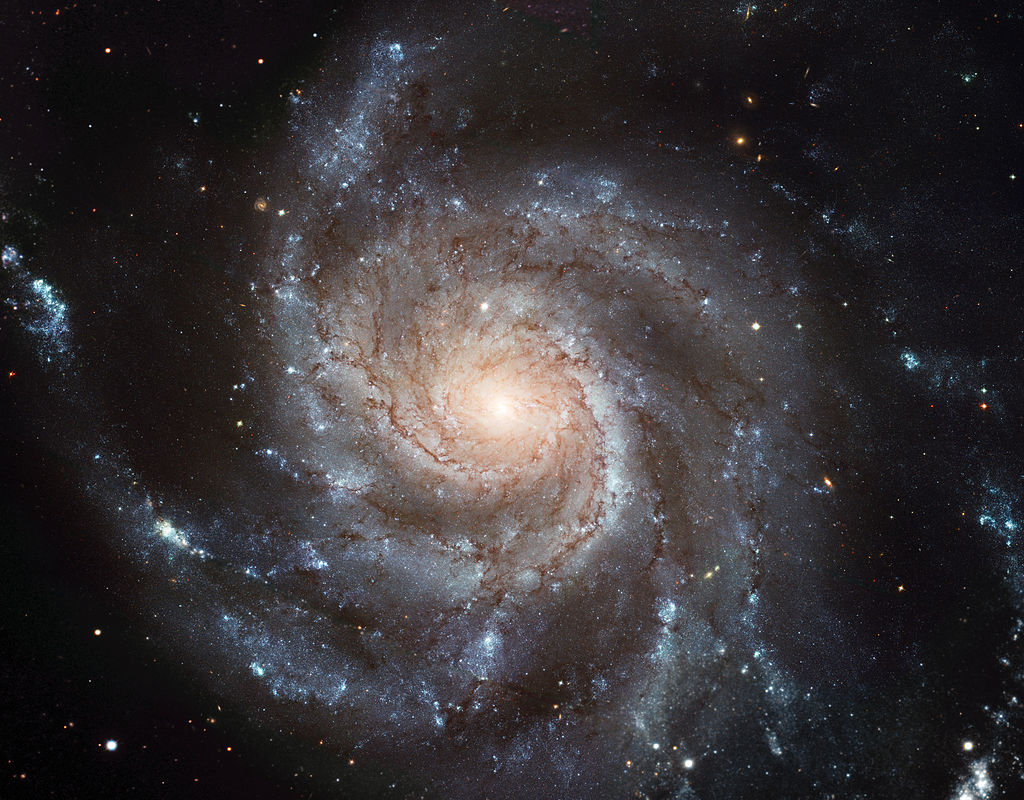


 2
2
On a larger scale, galaxies are organised into clusters: enormous collections of up to a thousand galaxies, bound by gravity. Again, the material we are able to detect directly indicates that the velocity of individual galaxies ought to decrease with distance from the cluster's centre. What we actually measure is a pretty constant value. Our mass calculations must be off – but how? Scientists theorise this is because of missed matter... something with mass that we can't see.


 2
2The cosmic microwave background radiation is the afterglow of the Big Bang, a fossil record of the radiation from the very early universe, an image of the moment only a few hundred thousand years into the life of the universe when everything had cooled enough for atoms to form. When these atoms formed, there were far fewer unattached charged particles around for light to interact with, allowing it to propagate freely, and the universe stopped being opaque to light. By using very sensitive detectors, scientists are able to measure variations in the faint level of this fossil microwave radiation across the entire sky.
In the universe before this point, for normal matter, the electromagnetic force would have played a far more important role than gravity because it is so much stronger. However, matter was mostly composed of a very hot plasma of particles and, over distances, these electromagnetic forces cancelled out. Our measurements of this background radiation show small but significant local variations which are understood to be the source of the structure in the universe today, and the reason material in grouped together to form stars, galaxies, and galaxy clusters. But how did these variations form?


 4
4How many dwarf galaxies are out there?
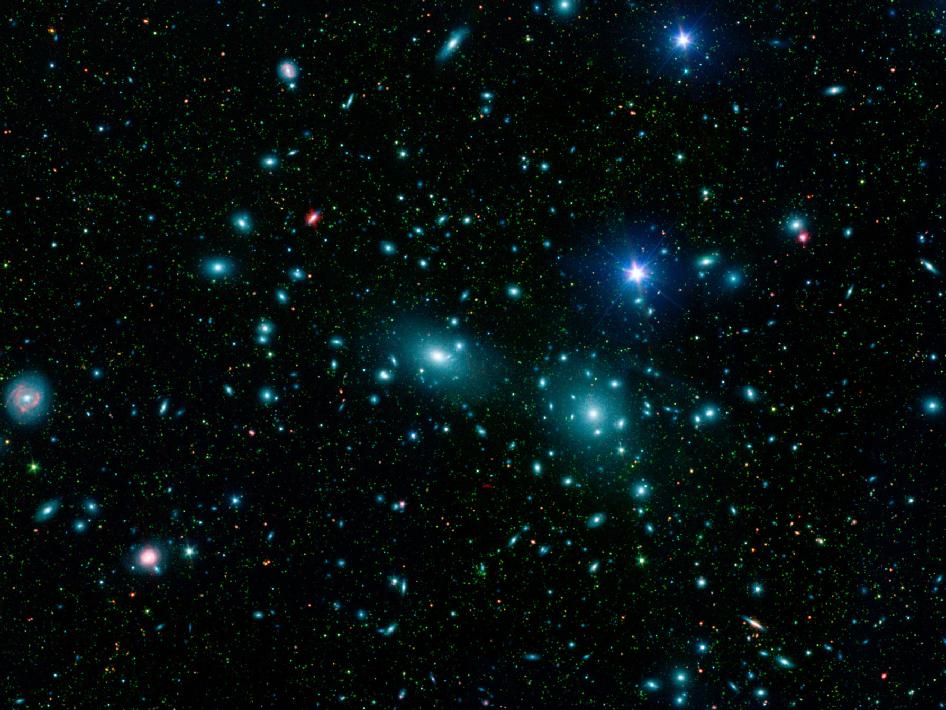
Dwarf galaxies are small galaxies containing a few billion stars (hundreds of times fewer than our own Milky Way). The most widely accepted model used to explain the expansion and history of the universe to this point, known as the lambda-CDM model, predicts that there should be many more dwarf galaxies in the cosmos than we have thus far observed. This is because the way cold dark matter clumps together is predicted (using computer simulations) to give more smaller things than big things. It's also possible there are more dwarf galaxies out there and we just haven't found them – dwarf galaxies can be hard to detect because they're very faint and imaging technology necessary for their direct observation is relatively new. The other alternative is that there's something wrong with our models – and we're yet to work out what.

Smaller galaxies tend to be denser, and have a higher proportion of dark matter. Dwarfelliptical-shaped galaxies may be amongst the most dark matter dominated objects in the universe – and are the most common type of galaxy. But what role does dark matter play in the formation, number, and distribution of galaxies?

Cooking up Elements
The vast majority of the atoms we detect in the universe were created from hydrogen atoms very shortly after the Big Bang, in a process known as nucleosynthesis, giving a universe of mostly hydrogen and helium with some tiny amounts of deuterium, lithium, and beryllium (heavier elements are created later in processes within stars). The ratio of these is important to physicists as it's believed to reflect the early universe. Calculations based on the ratio tell us that the density of the material making up these atoms was too low to account for the observed rate of expansion of the universe. We measure the early universe by looking at distant objects: because light takes time to reach us, looking at very distant objects means literally looking back in history. Measurements of the expansion of the universe (by looking at how groups of galaxies are moving apart) have also been taken into account. And to account for the expansion and ratio of elements, we need more mass in the early universe: dark mass.
Learn more about Big Bang Nucleosynthesis.

 2
2What's bending the light in the Bullet Cluster?
The path of a beam of light can be bent by the gravitational effect of an object’s mass. A sufficiently heavy object (for example a galaxy or cluster of galaxies) can act like a lens, bending light beams that pass close to it around a focal point, just like the lens in a telescope, or a pair of glasses. This is a process known as gravitational lensing. By observing the manner in which these objects bend the path of light from objects behind them, scientists can identify the centre of mass around which the light is being bent. But scientists have found the centre of mass does not agree with our observations of gravitational lensing[1]. To reconcile the two, we need to evoke dark matter.

 2
2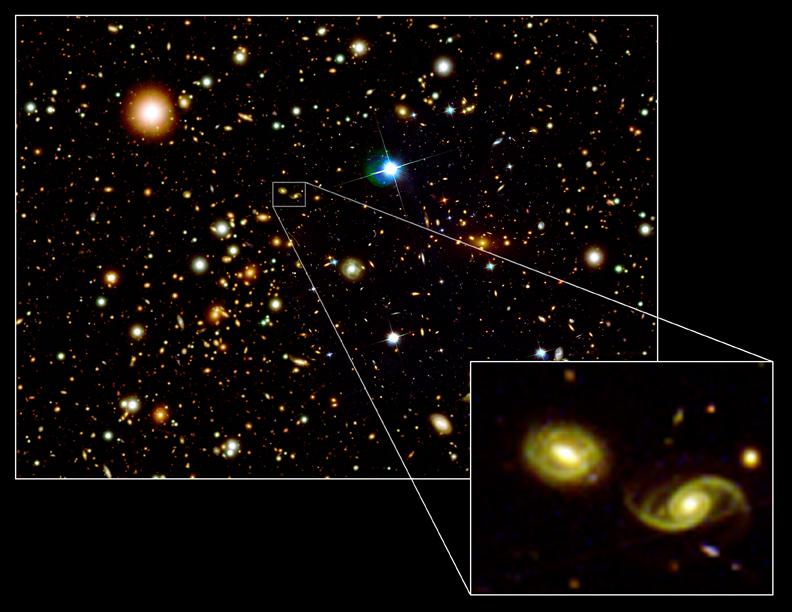
Evolution of the universe
One of the biggest questions in astronomy is how did the universe end up the way it is?
Clues lie in the formation of stars in nebulae, looking at galaxies of all ages across the universe, and studying the cosmic microwave background. Black holes may also hold clues – but did they form as the first stars did, or did the first stars form the first black holes? Dark matter is also a key player in answering this question, since most of the universe is believed to be made up of dark matter and dark energy – but how can we detect these things and observe them, when they do not emit any kind of radiation or interact that strongly with matter?
Learn more about Evolution of the Universe.

 2
2So what is it?
Scientists have a number of theories about what dark matter is – and the list may get longer in the future! However, determining its nature is challenging because it is incredibly hard to isolate interaction events between dark matter and ordinary matter. Further, our detection techniques are based to a large extent on assumptions, specifically about mass, and that dark matter might interact via the weak nuclear force. If these assumptions are false, scientists may be looking in the wrong places!

The way in which stars are grouped in galaxies, galaxies in clusters and so on could be helpful to us in understanding dark matter. This hierarchy of structure in the universe may offer some clues as to properties of dark matter, such as the masses of the particles responsible: their masses would affect the speed at which they move compared to the speed of light, which, in turn, affects structure in the early universe. Scientists can think backwards, looking at structure, to learn about mass.

 2
2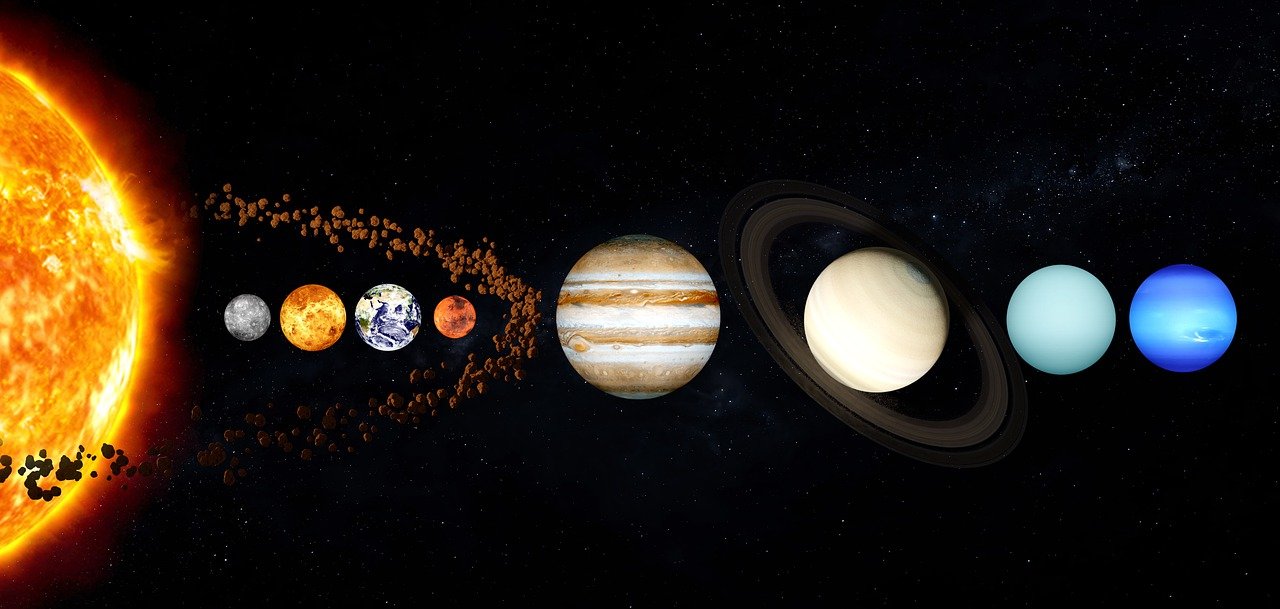
One theory, known as supersymmetry, predicts that the particles we know of ought to have partners; some may be much heavier and make up dark matter. If dark matter is composed of these, then it should be possible to detect them in particle accelerators on Earth. Mass and energy are equivalent (using Einstein's famous equation!), so if these supersymmetric partners do exist, then the lightest of them are at least as heavy as the limit of the energy in these experiments.


Has dark matter been detected?
Several physicists have suggested that a black hole detected by the observatory LIGO could be a signature of dark matter, after observing cosmic infrared background fluctuations they couldn't otherwise explain[2][3]. Despite arguments that cosmic microwave background constraints exclude primordial black holes in the mass range discussed, there is a huge scientific uncertainty around this mass range, and the black hole binary detected by LIGO might be a primordial black hole, and primordial black holes might be dark matter...


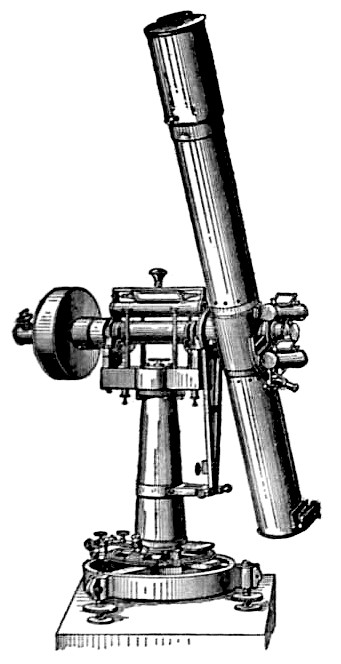
The original observation was made in 2007, but no one probed further as the data was fairly poor and made no sense compared to the Bullet Cluster, where galaxies collided and dark matter and matter remained tied together (seen with gravitational lensing). However, Hubble telescope observations have been confirmed with repeated, better quality measurements.
Some theories state that there are different types of dark matter, some of which are sticky and interact. Another explanation is that the Abell 520 cluster merger was more complicated than the Bullet Cluster – which only contained two colliding systems. A third is that the galaxies are there, but are too dim to be detected yet. Scientists are working on computer simulations of different scenarios.

Galactic centre gamma-rays
Measurements made by the Fermi space telescope seem to show a surplus of gamma ray emissions from the centre of our galaxy, and the source is unknown. This surplus can be measured by taking the images produced by the telescope and subtracting from them those gamma rays which we expect to see as a result of known objects and phenomena within the field of view. These gamma rays may originate from the annihilation of dark matter, or from normal astrophysical objects that we haven't identified yet[4]. The possibility remains that our models of the background radiation in the galactic centre are flawed in some way, and so the surplus may not exist, or exist in a different form.

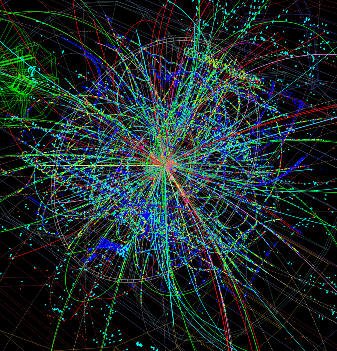


 2
2There are several pieces of evidence for dark matter, and it is a generally accepted proposal to explain a plethora of astronomical anomalies – but is it the right answer? What if there were a different explanation for each of the odd observations, and if it does exist, what is its nature? Will we ever detect it?
This article was written by the Things We Don’t Know editorial team, with contributions from DLR, Ed Trollope, Jon Cheyne, Grace Mason-Jarrett, Rowena Fletcher-Wood, and Alice Wayne.
This article was first published on 2015-08-27 and was last updated on 2021-07-20.
References
why don’t all references have links?
[1] Clowe, D., et al., (2006) A Direct Empirical Proof of the Existence of Dark Matter. The Astrophysical Journal 648:L109-L113. doi: 10.1086/508162.
[2] Bird, S., et al., (2016) Did LIGO Detect Dark Matter? Physical Review Letters 116(20). doi: 10.1103/PhysRevLett.116.201301.
[3] Kashlinsky, A., (2016) LIGO gravitational wave detection, primordial black holes, and the near-IR cosmic infrared background anisotropies. The Astrophysical Journal 823(2):L25. doi: 10.3847/2041-8205/823/2/L25.
[4] Abazajian, Kevork N., and Manoj Kaplinghat. Detection of a gamma-ray source in the galactic center consistent with extended emission from dark matter annihilation and concentrated astrophysical emission. Physical Review D 86.8 (2012): 083511.
Blog posts about dark matter

Recent dark matter News
Get customised news updates on your homepage by subscribing to articles













